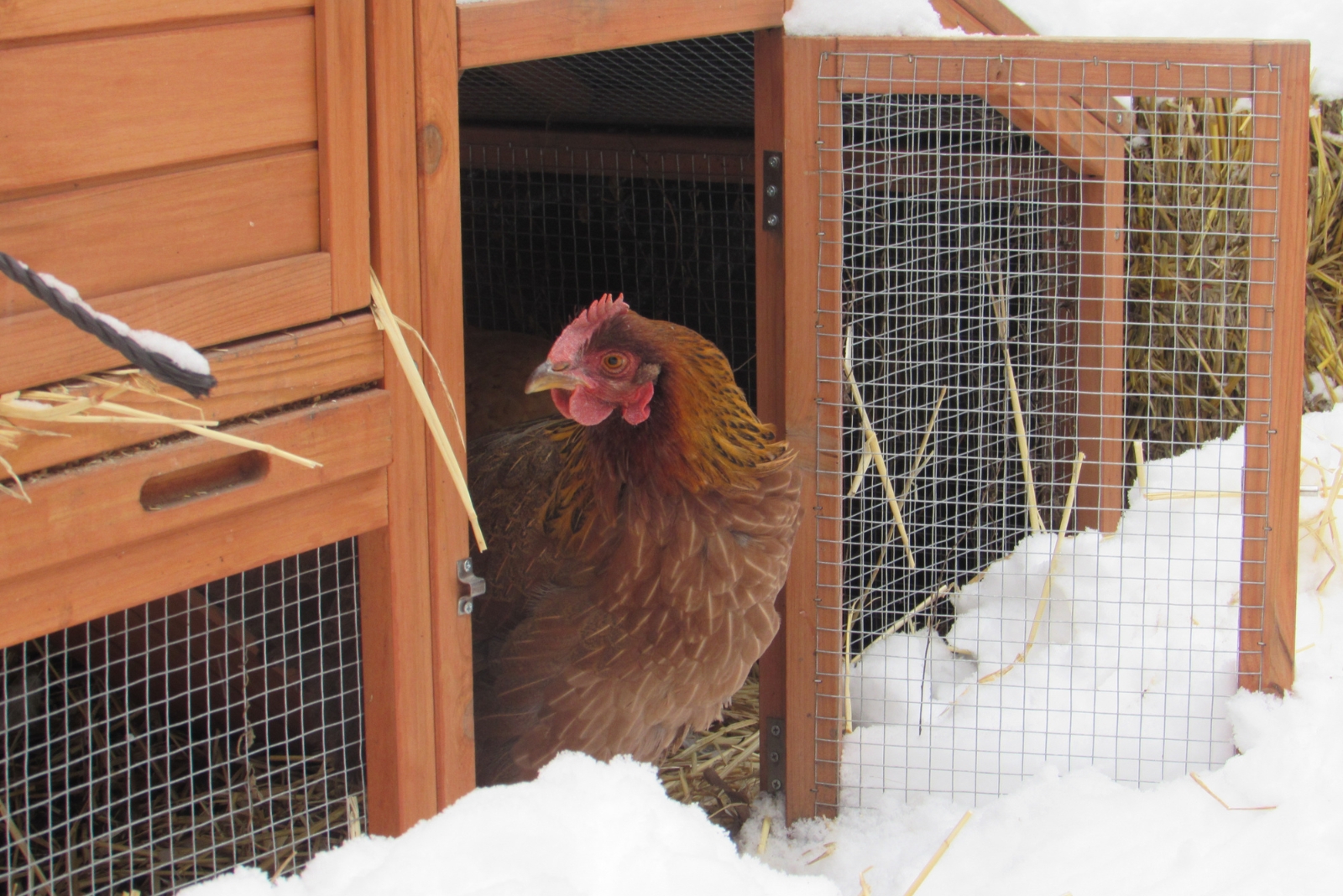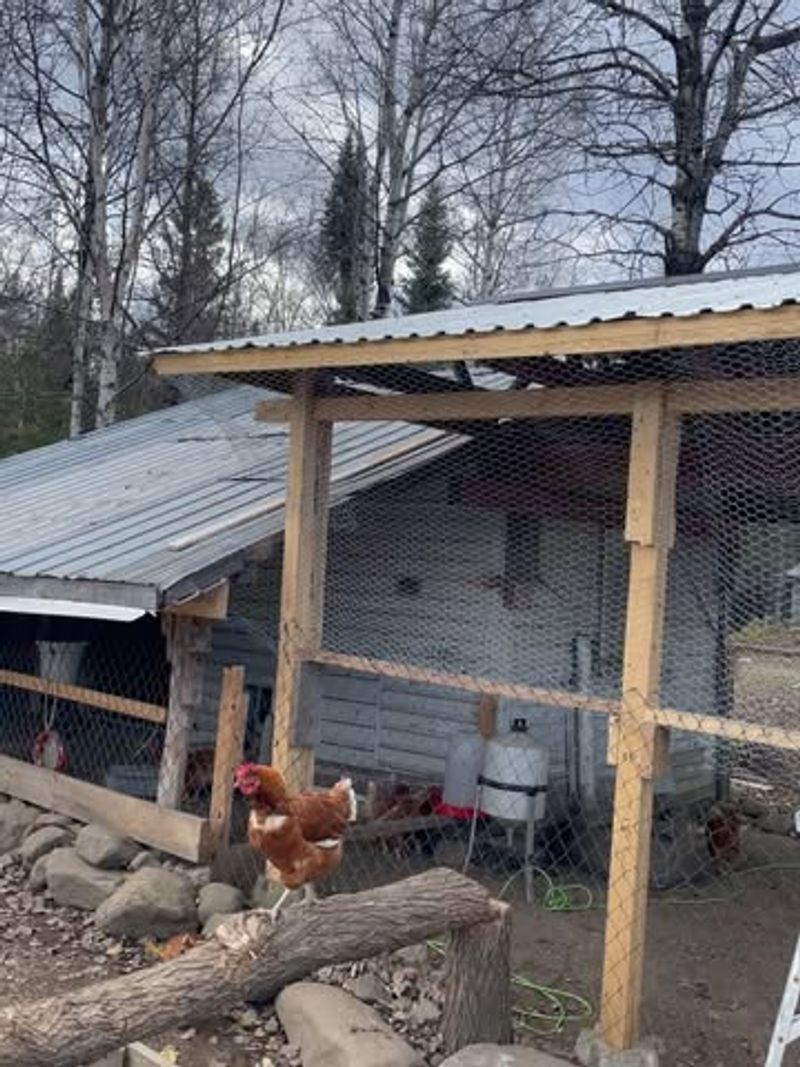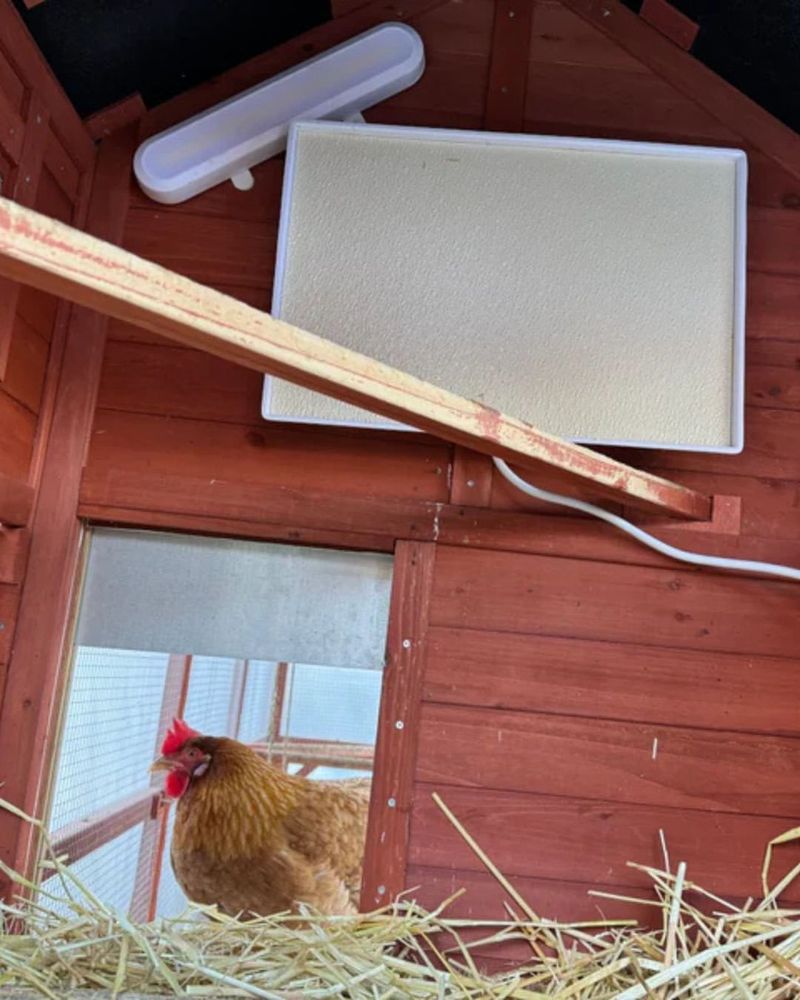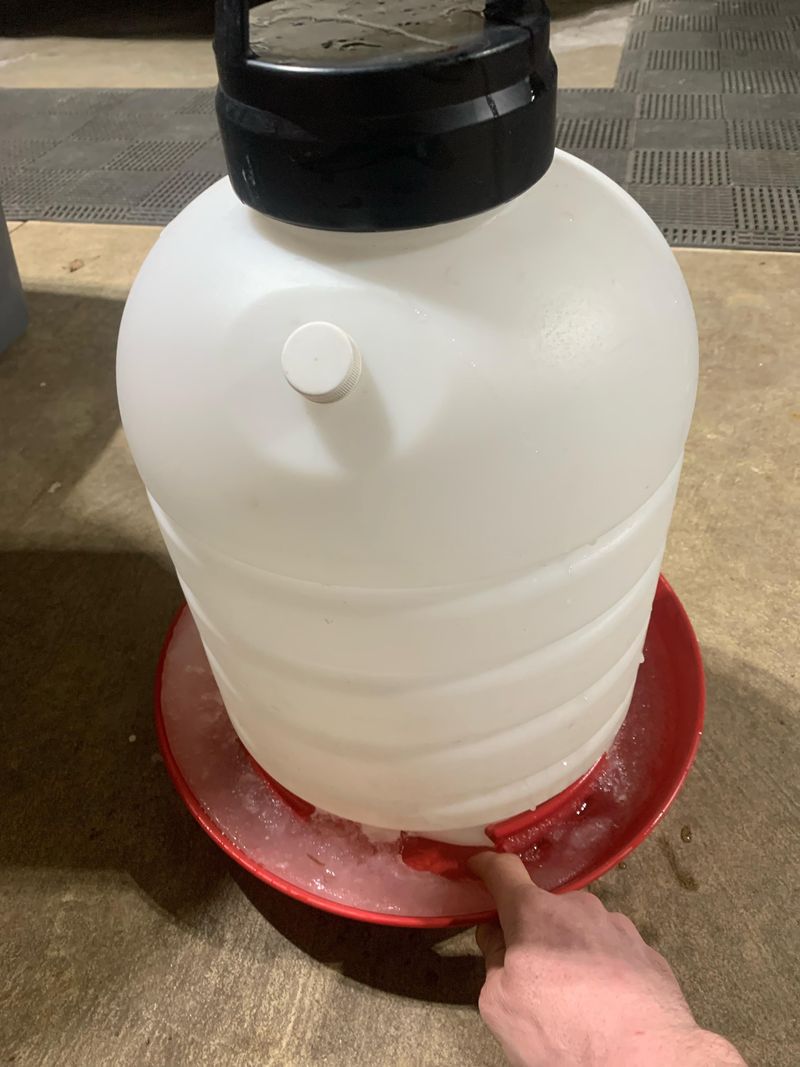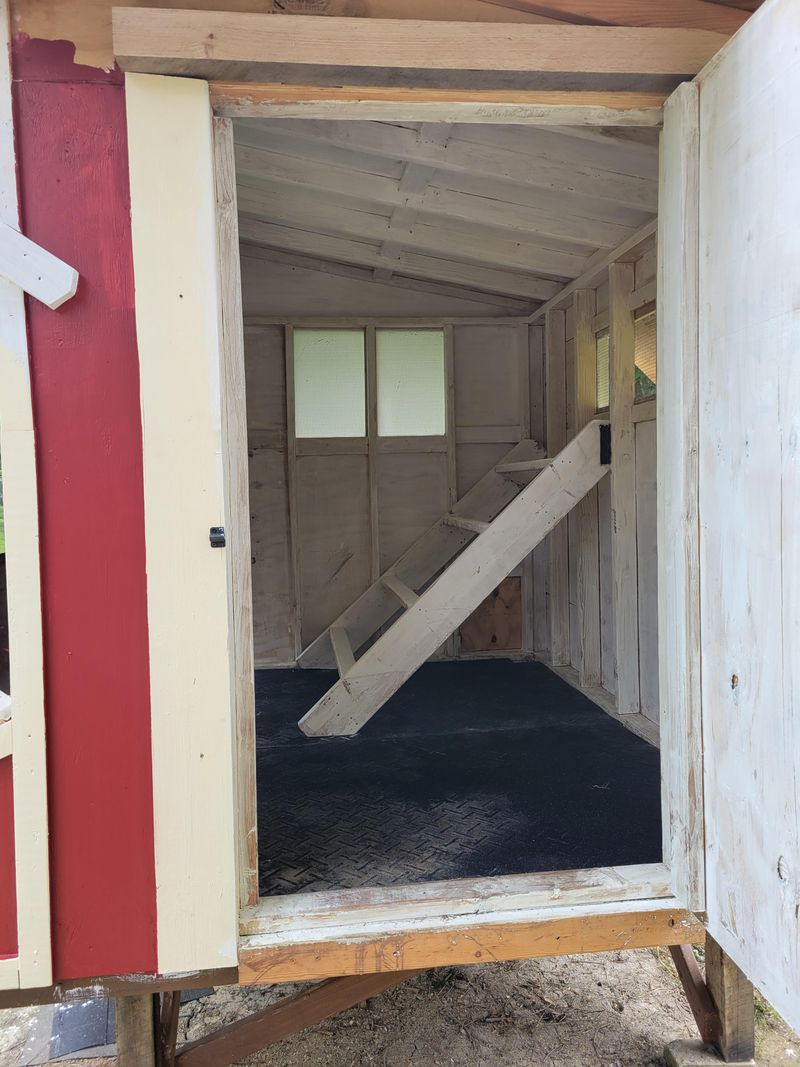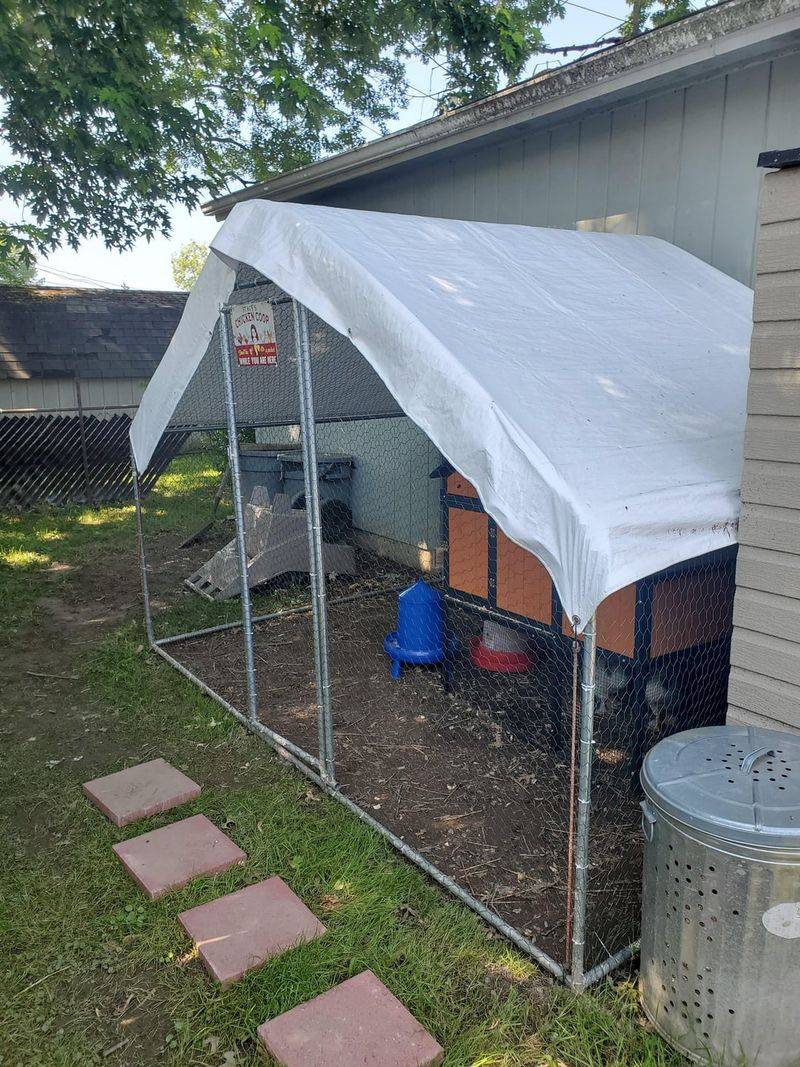Wisconsin cold hits harder than you expect, and I’ve learned that chicken coops feel it just as much as the birds inside. A few early steps make winter so much smoother for them, even on those freezing mornings.
I’ve tweaked my routine over the years and noticed how much calmer the flock stays with the right setup. Getting ahead of the weather keeps everything running warm, clean, and stress-free.
1. Check for Drafts and Seal Gaps
Cold air sneaking through tiny cracks can make your Wisconsin coop feel like an icebox overnight. Walk around the entire structure and look for holes, gaps around windows, or spaces where walls meet the floor.
Use caulk, weatherstripping, or expanding foam to block these openings. Remember that chickens need fresh air circulation, so seal drafts at chicken level while keeping upper vents open for moisture control.
2. Add Extra Bedding for Insulation
Think of bedding as a cozy blanket that traps warmth and keeps your birds comfortable during those frigid Wisconsin nights. Layer the coop floor with six to eight inches of pine shavings, straw, or hemp bedding.
This deep litter method creates natural heat as the materials break down slowly. Your chickens will fluff it up, burrow into it, and stay warmer than they would on bare floors or thin layers.
3. Upgrade Your Roosts for Cold Nights
Chickens spend most of their time roosting when temperatures drop, so wider perches help them cover their feet with their bodies for warmth. Replace narrow dowels with flat boards that are two to four inches wide.
Sand the edges smooth to prevent splinters, and position roosts away from drafty areas. Wisconsin chickens appreciate being able to sit flat-footed rather than gripping thin poles when the mercury plummets below zero.
4. Install Proper Ventilation Without Drafts
Moisture from chicken breath and droppings can cause frostbite and respiratory problems faster than cold air alone. Your Wisconsin coop needs ventilation openings near the roof to let humid air escape while keeping chickens out of direct wind.
Install adjustable vents that you can partially close during extreme cold snaps. Good airflow prevents condensation from forming on walls and keeps your flock healthier throughout the long winter months ahead.
5. Switch to Heated Waterers
Nothing frustrates chicken keepers more than hauling hot water to the coop multiple times daily when temperatures stay below freezing. Invest in a heated base or heated waterer designed specifically for poultry use.
These devices keep water just warm enough to prevent ice without overheating. Wisconsin winters can last months, so this investment saves time and ensures your birds always have access to liquid water for proper digestion and egg production.
6. Protect Windows with Clear Plastic
Windows let in precious winter sunlight that boosts mood and egg laying, but glass conducts cold directly into your coop. Cover the interior side of windows with heavy-duty clear plastic sheeting, leaving a small air gap between the plastic and glass.
This simple trick creates insulation while maintaining natural light. Your Wisconsin chickens benefit from longer daylight exposure without the bitter chill that comes through single-pane windows during January and February.
7. Stock Up on Quality Feed
Chickens burn significantly more calories staying warm when Wisconsin temperatures drop below freezing for weeks at a time. Switch to a higher-protein feed or supplement their regular diet with cracked corn in the evening.
Digesting corn generates body heat overnight, helping birds maintain their temperature until morning. Keep feeders full and consider offering warm oatmeal or scrambled eggs as occasional treats to provide extra energy during the coldest stretches.
8. Create a Covered Outdoor Run Area
Chickens go stir-crazy being cooped up all winter, but Wisconsin snow and ice make outdoor time challenging. Attach a tarp or clear roofing panels over part of your run to create a dry, protected area.
Spread straw or wood chips underneath to give chickens a place to scratch and stretch their legs without standing in snow. Fresh air and exercise keep birds healthier and happier, even when the weather outside looks absolutely miserable and uninviting.

